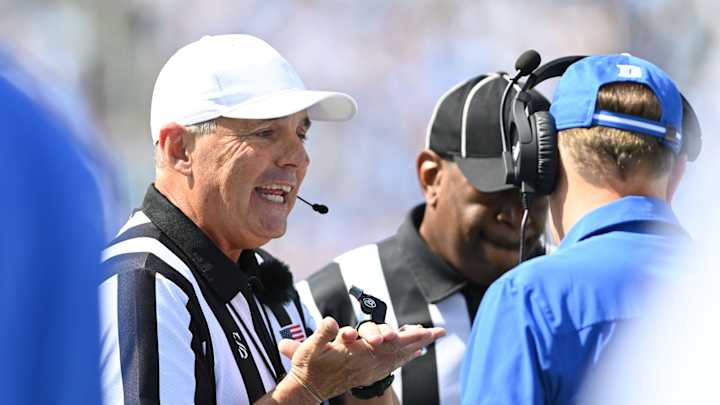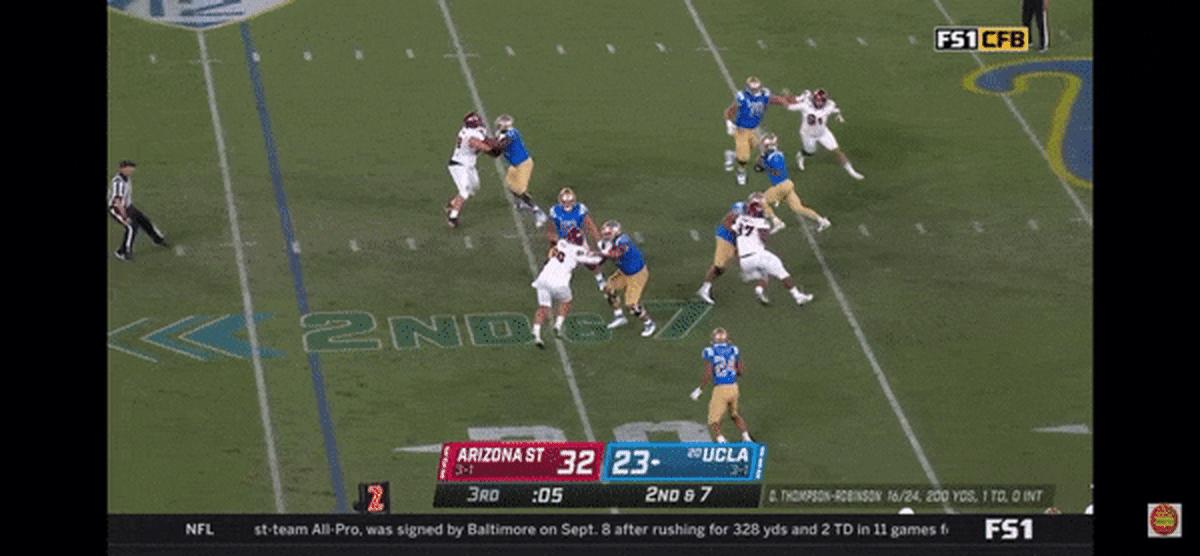College Football's Targeting Rule Needs Overhaul

It's no secret that athletes continue to get bigger, faster and stronger as the years progress. Football players today continue to benefit from advancements and progressions in things such as training, medicine and equipment that maximizes performance.
Rules of the game, especially at the NCAA level, have also attempted to keep up with the times. Specifically, rules such as targeting have been implemented as a safety measure to regulate defenders unnecessarily launching themselves into defenseless players on the offensive side of the ball.
Here's how the NCAA rulebook defines targeting:
- Launch — a player leaving his feet to attack an opponent by an upward and forward thrust of the body to make forcible contact in the head or neck area
- A crouch followed by an upward and forward thrust to attack with forcible contact at the head or neck area, even though one or both feet are still on the ground
- Leading with helmet, shoulder, forearm, fist, hand or elbow to attack with forcible contact at the head or neck area
- Lowering the head before attacking by initiating forcible contact with the crown of the helmet
The Arizona State Sun Devils have had three players ejected for targeting this season.
Defensive end Tyler Johnson was ejected in the first half of ASU's season opening win over Southern Utah, while fellow defensive lineman B.J. Green was ejected for the same call against Colorado.
The most recent (and perhaps most controversial) was linebacker Kyle Soelle's ejection in Arizona State's upset win over UCLA on Saturday night. Soelle will miss the first half of ASU's next game against Stanford because the foul occurred in the second half of the prior game.

When slowed down, Soelle's hit on UCLA quarterback Dorian Thompson-Robinson indeed looks bad. However, we have to remember that these athletes are playing and processing information at high levels of speed, leaving little room for error with a defender such as Soelle.
The flag for a late hit? Understandable, and probably the right call. However, when the hit was reviewed for targeting, the gray areas (and ultimately the root of the problem) were showcased.
Independent events that happen in football are sometimes too quick to catch in the first or second time of viewing, proving instant replay is a good tool for officials to review and potentially correct a mistake if needed.
When a defender tries to make a tackle, they're simply trying to bring the ball-carrier down as best as possible and often times, as best as they can no matter how in the snap of a finger.
When an official reviews targeting, they're slowing the play down and reviewing a multitude of things such as lowering of the helmet, how a defender approaches the tackle, and in many cases, intent of hitting the ball-carrier in the head or neck area.
Simply put, officials are taking minutes to review many factors and decisions that are made in milliseconds. Over-analysis of split-second moves has led to game-changing calls.
This isn't to say targeting is ruining college football. This also isn't to say the targeting rule doesn't come with good intentions. We're not in the old-school era of football anymore, and with more studies being done showcasing the long-term effects of football on players, there's been an effort to improve the safety of the game.
Yet in a wide range of cases, the targeting rule has gone too far and removed impactful players from games. Penalties are something a team can learn to live with (Arizona State knows all too well), yet the complete loss of a player for whatever remainder of the game simply isn't the right solution.
So, what is that golden elixir to fix these problems? Sports Illustrated's Ross Dellenger says college leaders are expected to explore modifications to the rule soon.
There's been a few ideas thrown about, yet the one that makes the most sense is a system similar to soccer's yellow/red-card system, where a player would receive a warning prior to a second infraction that results in an ejection.
No clear-cut system or modifications will be able to fully satisfy everyone. Yet it's become extremely clear that the NCAA must figure out the targeting rule as it gets increasingly criticized each week.
